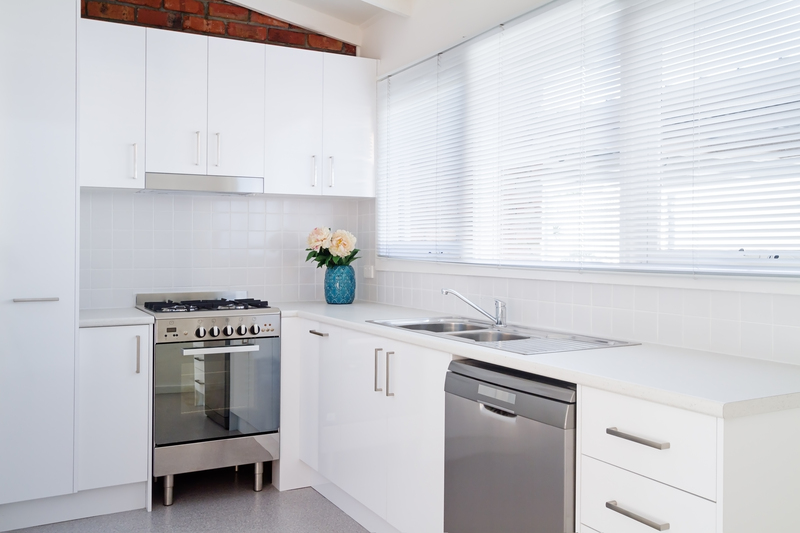Packing Essentials: Kitchen Do's and Don'ts
Posted on 20/09/2025
Packing Essentials: Kitchen Do's and Don'ts
Moving to a new home, whether across the street or across states, brings with it a whirlwind of emotions and tasks. One of the nerve-wracking yet crucial activities during this time is packing up the kitchen. This space, often the heart of any home, holds numerous fragile, bulky, and frequently used items. Understanding the kitchen packing do's and don'ts can make this process more manageable and less stressful.
Do Plan Ahead
Planning is the cornerstone of any successful packing strategy, especially when it comes to the kitchen. Start by taking a comprehensive inventory of what you have. This will help you identify the essentials that need to be packed and the non-essentials that can either be discarded or donated.
Creating a packing schedule can also help you avoid last-minute chaos. Start with items you rarely use and gradually move towards daily essentials.

Don't Leave Packing to the Last Minute
Procrastination can turn a manageable task into a stressful one. Packing the kitchen usually takes longer than other rooms due to the number of items and their fragility. Starting at least one to two weeks in advance gives you ample time to pack carefully, ensuring that nothing is damaged during the move.
Do Use Quality Packing Materials
Investing in high-quality packing materials can make a significant difference in the safety of your items. Use sturdy boxes, bubble wrap, packing paper, and cushioning materials to protect fragile items like glassware, plates, and small appliances. Quality tape and markers for labeling are also key components of a smooth packing process.
Pro Tip: Consider using specialty boxes for items like dishes and stemware. These boxes are designed with built-in dividers that provide extra protection.
Don't Overpack Boxes
Overpacking boxes can lead to them breaking under the weight, causing damage to the items inside. Keep the weight of each box manageable by spreading out heavier items and filling the rest with lighter, more flexible materials like dish towels or kitchen sponges.
Ensure that you can lift each box without straining to minimize the risk of injury or accidents during the move.
Do Label Everything Clearly
Clear labeling is crucial for an organized unpacking process. Write the contents and destination room on each box. For boxes containing delicate items, include a "Fragile" label to ensure they are handled with extra care.
Using color-coded labels or stickers can further streamline the process by allowing movers to quickly identify where each box should go.
Don't Forget to Pack an Essentials Box
During the first few days in your new home, you may not have the time or energy to unpack everything immediately. Prepare an essentials box with items you'll need right away, such as a few plates, mugs, cutlery, a small pot, a frying pan, dish soap, a sponge, and basic ingredients like salt, pepper, and oil.
This box will be a lifesaver, allowing you to prepare simple meals and settle in comfortably without rummaging through multiple boxes.
Do Discard Expired and Unwanted Items
Moving is a great opportunity to declutter and get rid of items you no longer need. Check the expiration dates on all perishable items and dispose of anything that's past its prime. Donate or give away non-perishable foods and kitchen gadgets you haven't used in the past year. This will not only lighten your load but also make for a more organized kitchen in your new home.
Don't Neglect Defrosting Your Refrigerator
If you're moving a refrigerator, it's crucial to defrost it at least 24 to 48 hours before the move. This will prevent leaks and water damage during transportation. Clean it thoroughly and remove all shelves and trays, securing them separately.
Make sure the refrigerator is completely dry before packing it to avoid the growth of mold and mildew.
Do Pack Small Appliances Correctly
Small kitchen appliances like blenders, toasters, and microwaves should be packed with care. Use their original boxes if you have them, as these are designed for safe transportation. If not, wrap each appliance in bubble wrap and place them in sturdy boxes, filling any gaps with packing paper or peanuts to prevent movement.
Remove any detachable parts and pack them separately to avoid breakage.
Don't Pack Hazardous Materials
Some kitchen items are considered hazardous and should not be packed for a move. These include flammable, explosive, or corrosive items like aerosol cans, cleaning solvents, and cooking oils. Consult with your moving company about their specific restrictions, and dispose of these items safely according to local regulations.
Do Take Extra Care with Glassware and Dishes
Glassware and dishes are particularly prone to breaking during a move. Wrap each item individually in packing paper or bubble wrap, and place them vertically in boxes. Use dish pack boxes with cell dividers if possible, and fill any gaps with cushioning materials.
Avoid stacking dishes flat, as this increases the risk of breakage from pressure or impact.

Don't Forget to Protect Your Cutlery
Sharp knives and other cutlery should be handled with care to prevent accidents. Wrap each knife in a dish towel or bubble wrap and secure it with a rubber band. Place them in a container or a knife block, and label the box to indicate the sharp content.
This will ensure they are both protected and safe during the move.
Conclusion
Packing up a kitchen for a move can be a daunting task, but with careful planning and the right approach, it can be done efficiently and safely. By following these do's and don'ts, you can ensure that your kitchen items arrive at your new home in one piece, ready to be unpacked and enjoyed. Remember, a little extra time and effort in the packing phase can save you a lot of hassle later on.







